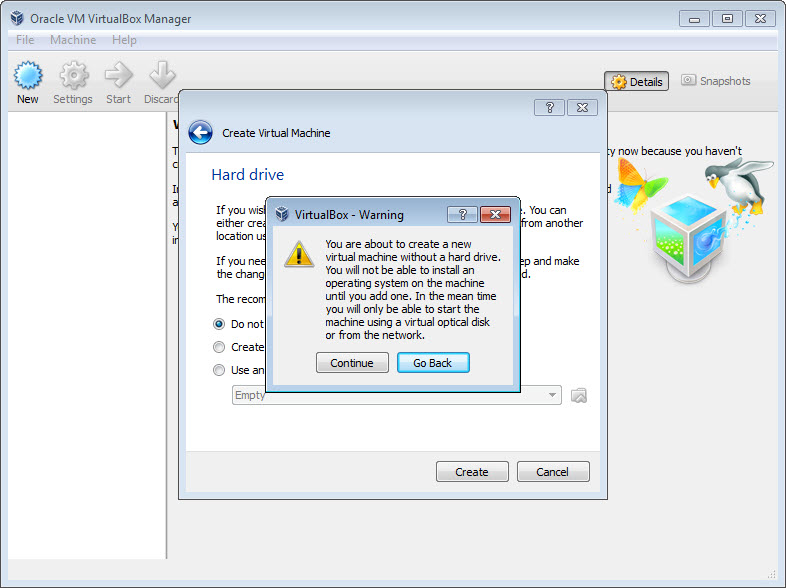

Some other notable features are the addition of Headless Start and Detachable Start options when power up a new Virtual Machine image. If you already using VirtualBox to run Windows 10 prior VirtualBox 5.0 you now have the option to update any existing VM to Windows 10 option. Now VirtualBox officially supports Windows 10 as one of the Windows version in the configuration page when you create a new virtual machine. There are specific support added for the latest Windows 10. Windows 10 are Support Natively On VirtualBox

This helps ensure data is secure and encrypted at all times, whether the VM is sitting unused on a developer’s machine or server, or actively in use.
 Disk Image Encryption: Data can be encrypted on virtual hard disk images transparently during runtime, using the industry standard AES algorithm with up to 256 bit data encryption keys (DEK). The drag and drop feature transparently allows copying or opening of files, directories, and more. Bi-Directional Drag and Drop Support for Windows: On all host platforms, Windows, Linux and Oracle Solaris guests now support “drag and drop” of content between the host and the guest. The guest OS can be configured to support USB 1.1, 2.0, and 3.0. Support of USB 3.0 Devices: Guest operating systems can directly recognize USB 3.0 devices and operate at full 3.0 speeds. Improved CPU Utilization: Exposes a broader set of CPU instructions to the guest OS, enabling applications to make use of the latest hardware instruction sets for maximum performance. Paravirtualization Support for Windows and Linux Guests: Significantly improves guest OS performance by leveraging built-in virtualization support on operating systems such as Oracle Linux 7 and Microsoft Windows 7 and newer. A major release that are worth to upgrade for, some of the features includes: Last week Oracle just announced latest version of VirtualBox 5.0. VirtualBox is the most popular cross-platform virtual machine application out there that are free for none commercial use.
Disk Image Encryption: Data can be encrypted on virtual hard disk images transparently during runtime, using the industry standard AES algorithm with up to 256 bit data encryption keys (DEK). The drag and drop feature transparently allows copying or opening of files, directories, and more. Bi-Directional Drag and Drop Support for Windows: On all host platforms, Windows, Linux and Oracle Solaris guests now support “drag and drop” of content between the host and the guest. The guest OS can be configured to support USB 1.1, 2.0, and 3.0. Support of USB 3.0 Devices: Guest operating systems can directly recognize USB 3.0 devices and operate at full 3.0 speeds. Improved CPU Utilization: Exposes a broader set of CPU instructions to the guest OS, enabling applications to make use of the latest hardware instruction sets for maximum performance. Paravirtualization Support for Windows and Linux Guests: Significantly improves guest OS performance by leveraging built-in virtualization support on operating systems such as Oracle Linux 7 and Microsoft Windows 7 and newer. A major release that are worth to upgrade for, some of the features includes: Last week Oracle just announced latest version of VirtualBox 5.0. VirtualBox is the most popular cross-platform virtual machine application out there that are free for none commercial use.







 0 kommentar(er)
0 kommentar(er)
